Seeing the check engine light on the dashboard is the last thing car owners want to see. A check engine light is illuminated for a number of reasons, one of which is the P0029 OBD-II trouble code. So, what does the P0029 code mean and how bad is it?
In this blog post, I will be talking about what the P0029 OBD-II trouble code means, how to diagnose it, how to fix it, and whether is it safe to drive with that code.
- Key Takeaway
- What Does The P0029 OBD-II Trouble Code Mean?
- What Are The Possible Causes of the P0029 OBD-II Trouble Code?
- What Are The Common Symptoms of The P0029 OBD-II Trouble Code?
- Is It Safe To Drive With a P0029 OBD-II Trouble Code
- How To Diagnose The P0029 OBD-II Trouble Code
- How Much Does It Cost To Repair P0029 OBD-II Trouble Code?
- How To Fix The P0029 OBD-II Trouble Code
- 1. Get a new exhaust variable valve timing solenoid
- 2. Park the vehicle and let the engine cool down
- 3. Locate the exhaust variable valve timing solenoid
- 4. Remove the old exhaust variable valve timing solenoid
- 5. Install the new exhaust variable valve timing solenoid
- 6. Delete the error code using the scanning tool
- 7. Test drive the vehicle
- FAQs
- Conclusion and final thoughts
Key Takeaway
- P0029 is a trouble code that stands for Exhaust Valve Control Solenoid Circuit Range/Performance (Bank 2).
- P0029 means that the vehicle’s computer has detected an electrical issue with the variable valve timing (VVT), or variable camshaft system (VCS).
- It is not safe to drive with a bad exhaust valve control solenoid because all of the exhaust gases will be trapped inside the engine and can lead to engine overheating.
- To fix the P0029 OBD-II trouble code, one would generally need to check and possibly replace the exhaust valve control solenoid, ensure there is no open or shorted wiring in the solenoid harness, and confirm that the engine oil is clean and at the correct level.
What Does The P0029 OBD-II Trouble Code Mean?
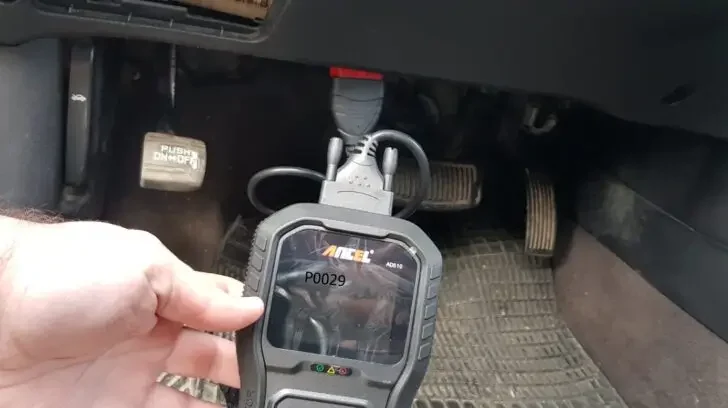
P0029 is a generic OBD-II trouble code that is defined as Exhaust Valve Control Solenoid Circuit Range/Performance (Bank 2) and is triggered when the powertrain control module(PCM) detects a fault in the electro-hydraulic control system of the variable valve timing (VVT), or variable camshaft system (VCS).
Bank 2 indicates the side of the engine opposite that contains cylinder number one on engines with two cylinder heads.
The exhaust solenoid is in charge of controlling the opening and closing of the exhaust valves that allow for exhaust gases to flow out of the engine and into the catalytic converter.
The opening and closing of the exhaust valves are done by applying a ground signal that moves a plunger into contact with spring-loaded metal contacts and closes them together.
When in a closed position, an electrical current passes between the solenoid control circuit and ground through them, and voltage is applied across the exhaust valve control solenoid coil windings.
The P0029 OBD-II trouble code is triggered when the powertrain control module notices that the variable valve lift solenoid for bank 2’s exhaust valves takes too long to engage or doesn’t engage at all.
Basically, when the voltage of the exhaust valve control solenoid circuit for bank 2 is outside the specified range it will trigger an error code.
What Are The Possible Causes of the P0029 OBD-II Trouble Code?
The most common cause of P0029 OBD-II trouble code is low engine oil level, followed closely by low oil pressure issues and incorrect, or unsuitable lubricating oil.
Other common causes of a P0029 OBD-II trouble code include:
- Bank 2 exhaust valve solenoid is failing or has completely failed, causing the valve lift to engage too slowly or not engage at all
- An open or shorted circuit in associated wiring (between the solenoid and ECM)
- Stretched timing chain
- Worn timing belt
- Faulty VVT solenoid
- Corroded electrical connectors
- Loss of ground contact (provides enough voltage to power the coil, but not enough to send it through the control circuit).
- Rare: Defective actuators or control valves
- Rare: Failed or failing PCM
What Are The Common Symptoms of The P0029 OBD-II Trouble Code?
Although the symptoms of the P0029 OBD-II trouble code are pretty much the same on all vehicles, the severity of one or more symptoms may vary from vehicle to vehicle.
- Poor gas mileage
- Check engine light illuminated
- Significantly reduced engine power at some engine speeds
- Poor acceleration
- Rough idle
- Hard starting or no start at all. This happens in cases where the actuators are jammed/damaged and do not allow valve timing to return to base settings. In these cases, error codes closely related to P0029 might be present.
Is It Safe To Drive With a P0029 OBD-II Trouble Code
It is not safe to drive with a P0029 OBD-II trouble code because the exhaust gases can’t escape from the engine due to the closed exhaust valves which can lead to engine overheating.
The exhaust gases that are formed as a result of combustion, are at high temperatures. From the combustion chamber, they need to escape and travel to the catalytic converter and then out of the tailpipe.
However, if your vehicle has a P0029 trouble code, it means that the engine control module has found that the exhaust valves for bank 2 take too long to engage or do not engage at all.
This means that the exhaust gases will stay inside the engine because the exhaust valves are not opening. This of course depends on how faulty the variable valve lift solenoid is. It can open from time to time which can make your vehicle driveable for a bit.
But, if the variable valve lift solenoid for exhaust valves is not working at all, it is very unsafe to drive your vehicle like this and will most definitely result in engine overheating.
How To Diagnose The P0029 OBD-II Trouble Code
When your vehicle is experiencing issues with the exhaust valve control solenoid circuit (P0029 trouble code), a check engine light will be illuminated on the dashboard.
However, a check engine light can mean a lot of things. So, how do you diagnose the P0029 trouble code?
1. Get a scanning tool
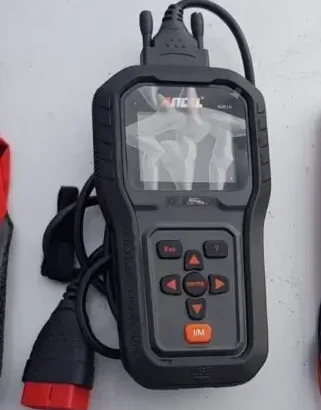
The P0029 manifests with rough idle, engine overheating, and overall decreased engine performance.
However, these symptoms can be present if something else has gone bad within the engine. So, the best way to diagnose the P0029 trouble code is by scanning your vehicle with a scan tool.
There are a lot of scanning tools on the market, however, I have used this scanner for the past two years and I am very satisfied with it. Check it out on amazon.com.
2. Locate the OBD port
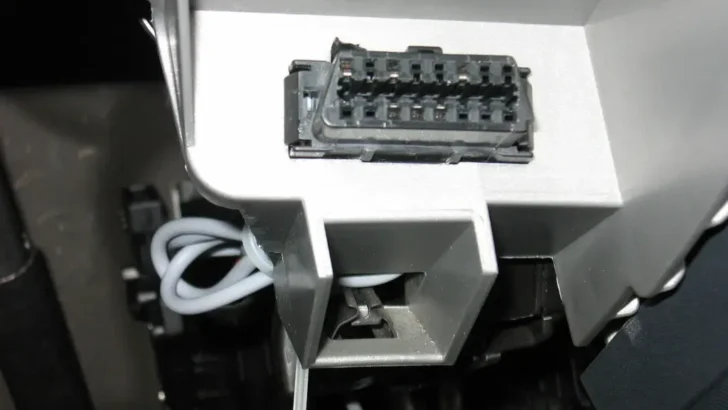
Vehicles manufactured after the year 1968 are equipped with OBD ports. The OBD ports all you to connect with the vehicle computer and read all error codes.
The OBD port is usually located on the driver’s side, under the steering wheel. On my 2007 Hyundai, it is exposed, however, on my Ford, I have to remove a plastic cover in order to reach the OBD port.
3. Connect the scanning tool

Connect your scanning tool to the OBD port of your vehicle and turn on your scanning tool. Turn on your scanning tool and press SCAN.
At this point, the scanning tool is connected to the vehicle’s computer and will scan for all trouble codes. If your vehicle has indeed a faulty variable valve timing solenoid on exhaust valve bank 2, you will see a P0029 trouble code on the screen.
How Much Does It Cost To Repair P0029 OBD-II Trouble Code?
| OBD-II Trouble Code | Make | Avg. Labor Cost | Part Cost | Total Cost |
|---|---|---|---|---|
| P0029 | BMW | $200 | $26.99 | $226.99 |
| P0029 | Toyota | $200 | $20.99 | $220.99 |
| P0029 | Ford | $200 | $19.99 | $219.99 |
| P0029 | Chevrolet | $200 | $22.99 | $222.99 |
| P0029 | GMC | $200 | $21.99 | $221.99 |
| P0029 | Dodge | $200 | $24.99 | $224.99 |
| P0029 | Jeep | $200 | $23.99 | $239.99 |
| P0029 | Buick | $200 | $20.99 | $220.99 |
| P0029 | Cadillac | $200 | $24.99 | $224.99 |
| P0029 | Chrysler | $200 | $23.99 | $223.99 |
How To Fix The P0029 OBD-II Trouble Code
Fixing the P0029 trouble code at home can save you a couple of hundred dollars. Although it is a pretty easy fix, if you are not comfortable working on your vehicle by yourself, make sure to call someone who has experience in fixing cars.
Here is how to fix the P0029 trouble code (replacing the exhaust valve control solenoid):
1. Get a new exhaust variable valve timing solenoid
Having a P0029 trouble code means that your exhaust variable valve timing solenoid has to be replaced. So, before you start with the task, make sure to get a new one. You can order an exhaust variable valve timing solenoid on amazon.com.
2. Park the vehicle and let the engine cool down
When working on your vehicle, make sure that it is parked on leveled ground with the hand brake engaged. Also, most importantly, the engine has to be cold. Replacing the exhaust variable valve timing solenoid requires leaning on the engine and removing an actual part from it. If it’s hot, you can get burned.
3. Locate the exhaust variable valve timing solenoid
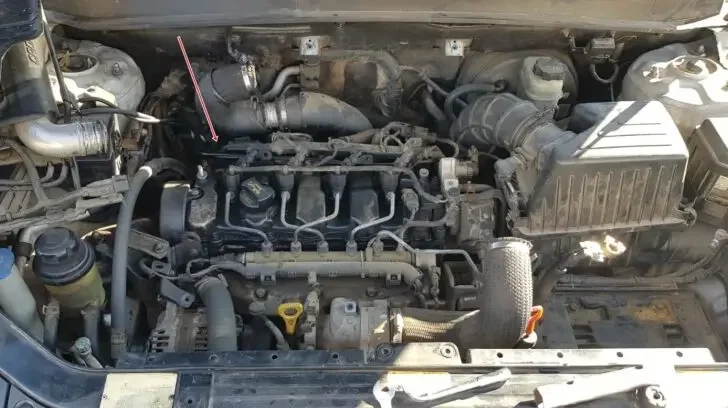
Remove any plastic covers, if present. Now, as you stand in front of the engine, on the front side of the engine you have the intake manifold. On the back side of the engine is the exhaust manifold.
The exhaust variable valve timing solenoid is located on the exhaust manifold e.i on the back side of the engine. You can also check your owner’s manual to see the exact location. But, in most vehicles, it is on the passenger side of the engine says OBD2Pros.
4. Remove the old exhaust variable valve timing solenoid
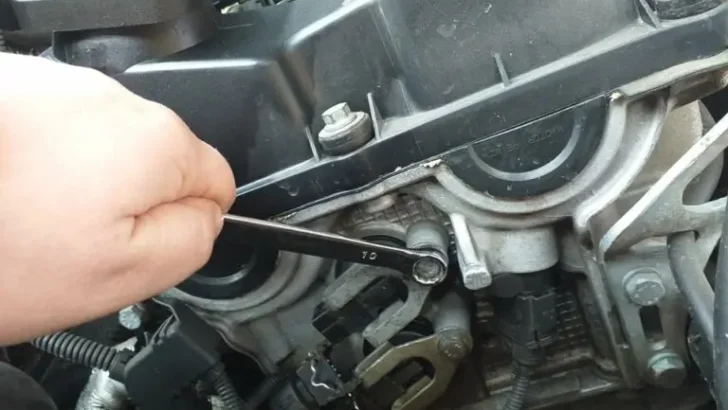
First, disconnect the electrical connection. The exhaust variable valve timing solenoid is usually secured with a 10-millimeter bolt.
So, grab a ten-millimeter socket remove the bolt, and store it for later. Then, simply pull out the exhaust solenoid. The solenoid will probably have some oil on it, so make sure to grab a towel to wipe away any excess oil.
5. Install the new exhaust variable valve timing solenoid
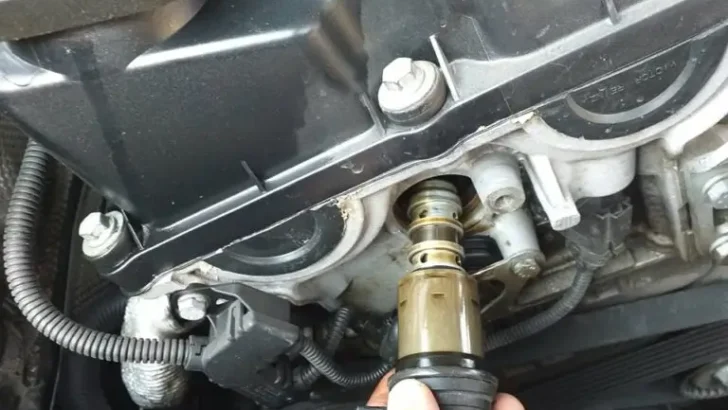
Install the new exhaust variable valve timing solenoid and secure it with the 10-millimeter bolt. Reconnect the electrical cord. You can also check the electrical connector and see if it’s damaged.
6. Delete the error code using the scanning tool
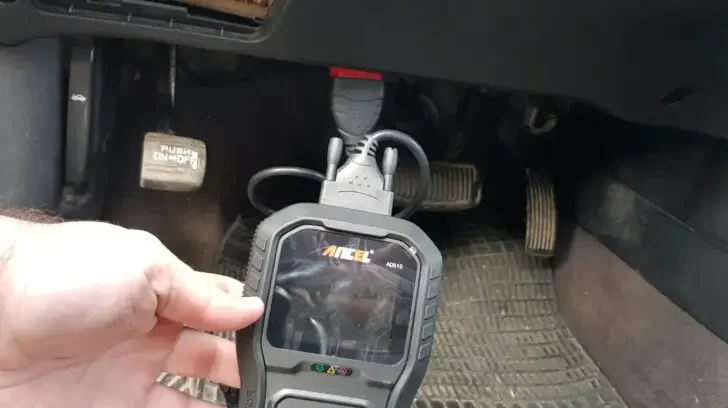
After the repair is done, you need to delete the P0029 trouble code and see if it will come back up. However, depending on the model of your scanning tool, you may or may not have this option. If you don’t have it, you can take your vehicle to the mechanic shop and have it done there.
7. Test drive the vehicle
Drive your vehicle for about 100 to 150 miles and see if the P0029 trouble code will come back up. However, if you have closely followed the steps and replaced the exhaust variable valve timing solenoid, the P0029 should be fixed.
FAQs
Q: Can I drive my car with a P0029 trouble code?
A: It is generally not recommended to drive your car with a P0029 trouble code, as it can lead to further engine damage and potentially cause the car to stall or not start at all.
Q: How much does it cost to fix a P0029 trouble code?
A: The cost to fix a P0029 trouble code can vary depending on the underlying cause of the issue and the specific make and model of the vehicle. It is recommended to consult with a mechanic for a proper diagnosis and cost estimate.
Q: Can I fix a P0029 trouble code myself?
A: Some basic troubleshooting steps, such as checking the camshaft position sensor connection or replacing a faulty sensor, can be done by an experienced DIYer. However, for a proper diagnosis and repair, it is often best to consult with a professional mechanic.
Q: How can I prevent a P0029 trouble code?
A: While there is no guaranteed way to prevent a P0029 trouble code from occurring, regular maintenance and servicing of your vehicle can help minimize the risk. This includes keeping up with oil changes, following the manufacturer’s recommended maintenance schedule, and promptly addressing any engine-related issues.
Q: Can a P0029 trouble code cause other problems if left untreated?
A: If left untreated, a P0029 trouble code can potentially cause further engine damage, reduced fuel efficiency, and drivability issues. It is recommended to address the issue as soon as possible to prevent any additional problems.
Conclusion and final thoughts
In conclusion, OBD-II trouble codes are an important tool for identifying and diagnosing issues with your vehicle.
With over 4,000 different codes, it can seem overwhelming at first to understand them all.
However, by utilizing resources such as code readers and online databases, you can easily decipher the meaning behind each code.
